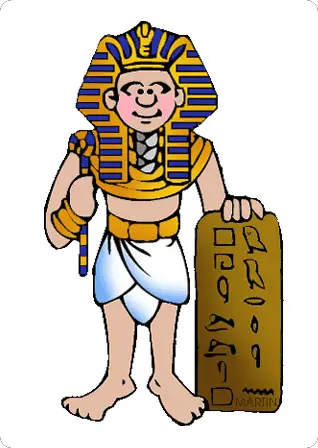Egyptian Scribes
The people that did all of the writing in ancient Egypt were called ‘scribes’.
We can give credit to the scribes for giving us so much important information about what life was like in ancient Egypt.
Today, we have books and libraries as well as the internet to get our information.
In the days of the pharaohs, the scribes kept track of everything, even the smallest detail.

Egyptian Scribes Facts For Kids
- Scribes were writers and record keepers.
- They wrote on papyrus using reed pens.
- Scribes were highly educated.
- They could read and write hieroglyphics.
- Scribes were important to the pharaohs.
- They were responsible for legal documents.
- Some scribes worked in temples.
What Did Scribes Do in Ancient Egypt
In ancient Egypt, scribes were really important. They spent many years learning how to read and write.
Scribes had cool jobs like keeping track of money, working in temples, helping doctors, and working for the government.
Importance of scribes
Ancient Egyptians knew how important the scribes were.
In the social classes, scribes were near the top of the chart.
Scribes didn’t have to pay taxes, be part of the military or do any manual labor.
Boys were sent to school at a young age to learn how to become a scribe.
Most of the children that went to school to learn to become a scribe were middle class because it cost money for the school.
The Egyptian title for scribe is ‘sesh’ which actually translates to “to draw”.
The highest level of scribe would be for the pharaoh’s court.
Learning to communicate

Scribes learned how to communicate using the hieroglyphs that were the writing of ancient Egypt.
The Egyptians kept records of absolutely everything and were very efficient and detailed.
Scribes were in attendance to record the stocks of food, court proceedings, wills and other legal documents, tax records, magic spells, and all of the things that happened every day in the life of the pharaoh.
Scribes were one of the most important functions that kept the administration in order.
Very little happened in ancient Egypt that was not recorded by a scribe.
In School

Children who went to school to learn to become a scribe would sit on the floor, cross-legged, with a wooden board on their lap to do their lessons.
This is the standard position that we see most scribes in throughout Egypt.
All of the images that have been found for scribes show them sitting on the ground with their scribe board on their lap to ‘draw’ the hieroglyphs.
Unlike our writing, hieroglyphs were action ‘pictures’ that could mean one word, many words, or an entire idea.
The scribes would have been experts at writing in hieroglyphs and they became the developers and protectors of the history of Egypt.
Egyptians believed that organization was key to making sure the government ran smoothly and the records kept by the scribes made sure that this happened.
Writing and Editing
Scribes didn’t just create new written information; they also edited existing writings.
Keeping the history of Egypt meant that the scribe had to be very educated.
Many of the higher positions in the Egyptian government required that they have the training of the scribes.
Most of the members of the government and royal court could read and write, but if they couldn’t they would hire scribes to do their writing for them.
Scribe Jobs
Scribes were also hired to monitor and keep records for all of the other social levels.
Some were teachers, others kept records of crops, and the farmers and other people did manual labor.
Archeologists have found storage jars used in the everyday life of the lower classes that had reusable labels. This means that many people of all class levels could read.
Once a student became a scribe, they would carry around the tools that they needed.
This was typically a wood palette and the reed pens and brushes as well as a roll of papyrus. Papyrus was a plant that was used to make their paper, and is the root word from our own word ‘paper’.
The process of making papyrus took a long time and was very expensive.
Instead of wasting papyrus to practice, scribes would often use pieces of clay called ‘ostraca’.
Scribe Equipment

The scribe pen was made from a reed stem that was very thin, most of the time around 9” long.
They hammered the end of the reed until it was soft and began to fray and then they trimmed the end to make it useful as a brush.
The ink that the scribes used was carried in flat pallets with two sections: one for red ink and one for black ink.
Red ink was made by mixing a kind of gum with red oxide for color and the black was gum mixed with soot.
Almost everything was written in black ink, except anything that had to do with titles, headings, or magical words.



